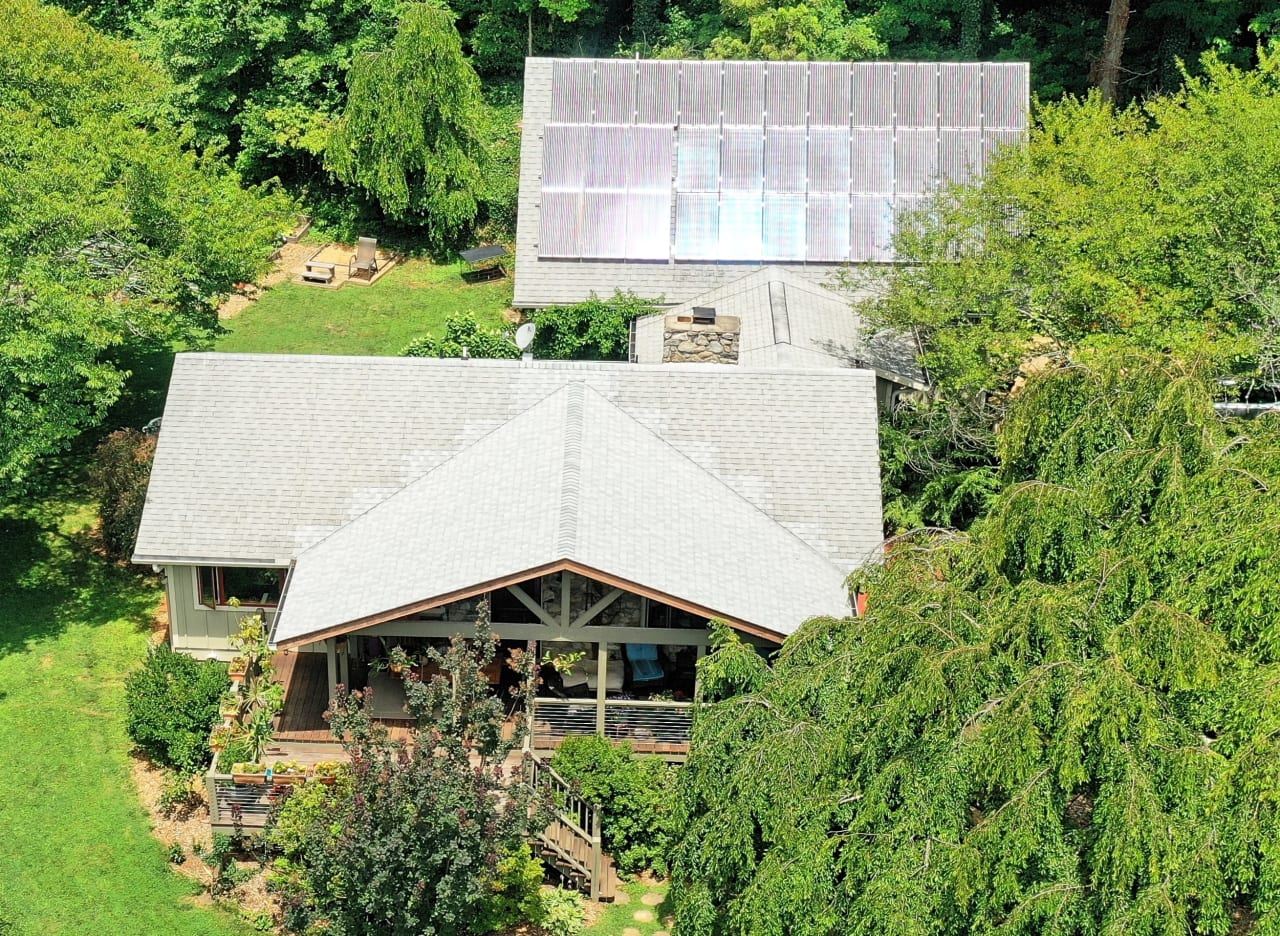After spending the morning in the greenhouse with my friend repotting our summer seedlings to the next size pot for a few more weeks of growing time, I realized I was ready for some lunch. You can get caught up in a task like gardening, so much so that it wasn’t until we were finished and the tools were all put away that the knock of hunger was loud enough to get my attention.
There wasn’t much in the refrigerator. My husband and I are headed out for a short trip in a couple of days and we have eaten through our week’s supplies to make room for the dog sitter’s provisions. There were some oyster mushrooms fresh from yesterday’s warm weather flush, my standby shallots and, last year's garlic as well as a small piece of our locally farmed pepperoni that was ready to be finished.
I put a small cast iron skillet on the induction range. (That’s really what this article is about) and chopped the pepperoni, shallots and garlic into small pieces and turned the front burner on low. The pan began heating up and the avocado oil and freshly cut garlic began to give off that wonderful aroma that seems to be the hallmark of most of my cooking. I have been a cook for over 50 years, drawn to it since I stood at my mother’s side while she learned to cook the native meals of the many countries we lived in when I was a child. I love cooking and I have always been convinced the hallmark of a good kitchen was a nice sturdy gas stove. Cooking has been part of my creative experience, and as with many artists, I’d gotten partial to my favorite tools and ingredients.
But last year, in a conversation with my son (who is himself a good cook and an amazing researcher…do we call those googlers now?), we talked about how his favorite chef/teacher J. Kenji López-Alt was saying that induction stoves were quite good for cooking. This was truly something new, almost a sacrilege, to hear this from a well-known chef after it had been long established that gas was the preferred fuel for cooking. Kenji’s point was that other than the visual cues that flames give and the additional tasks of charring required for very specific meals, everyday cooking mostly involves just transferring heat from the stovetop to the pan. Induction stoves do that really well.
According to the EPA "Conventional residential cooking tops typically employ gas or resistance heating elements to transfer energy with efficiencies of approximately 32% and 75-80% respectively. Residential induction cooking tops instead consist of an electromagnetic coil that creates a magnetic field when supplied with an electric current. When brought into this field, compatible cookware is warmed internally, transferring energy with approximately 85% efficiency. Furthermore, because the source of heat is the cookware itself, the cooking top surface remains cool to the touch and less heat is lost to the surrounding air, providing an additional energy efficiency benefit by reducing the workload for the HVAC equipment. A cooler cooking top surface also makes induction cooking tops safer to work with than other types of cooking tops. Finally, because the cookware itself is the source of heat, it reaches desired temperatures more quickly and provides faster cook times. The per unit efficiency of induction Cooking Tops is about 5-10% more efficient than conventional electric resistance units and about 3 times more efficient than gas." EPA 2021-2022 Residential Induction Cooking Tops
This news led us to consider an induction stove with our next upgrade, that and the fact that whenever I turned on our old gas range the air filter in the living room next to the kitchen turned on and signaled there was an immediate need for air filtration. With the opportunities of the Inflation Reduction Act and the inspiration of the “Electrification Movement” my husband and I decided to replace our 13-year-old gas stove, the one with the oven door rusting out from the inside, to a new induction range. And I must say, we love it. No longer do we fret about the knob of the stove getting knocked and leaking gas into the house, or the struggle to get the flame lit after last night’s pasta boiled over and clogged the burner. We haven’t had it for a summer season yet, but I am already looking forward to not adding heat to the kitchen on those long hot summer days.
We had good stainless steel and cast iron pans already on hand and passed on our classic copper-clad pots to family members. Other than that, we have never looked back. You can boil water in a minute, then turn the burner down low and simmer at a low and gentle heat.
And that’s what I did today. Boiled a small pot of water in less than a minute, tossed in a handful of cavatelli pasta, finished gently sauteing my wild mushroom mixtures then tossed in two chopped stalks of celery. In no time everything was ready; I drained the pasta, combined it all together and topped it all with a sprinkling of grated parmesan. Delicious!
And cleanup was easy too. With the burners off they quickly cooled down and with a quick wipe the stove top was clean. My love of creating in the kitchen was satisfied once again. With this new appliance, cooking hasn’t changed one bit. And as a bonus, knowing that the solar panels on the roof are helping us not only charge our car, but can help us cook a meal too, makes everything taste just a little better!



